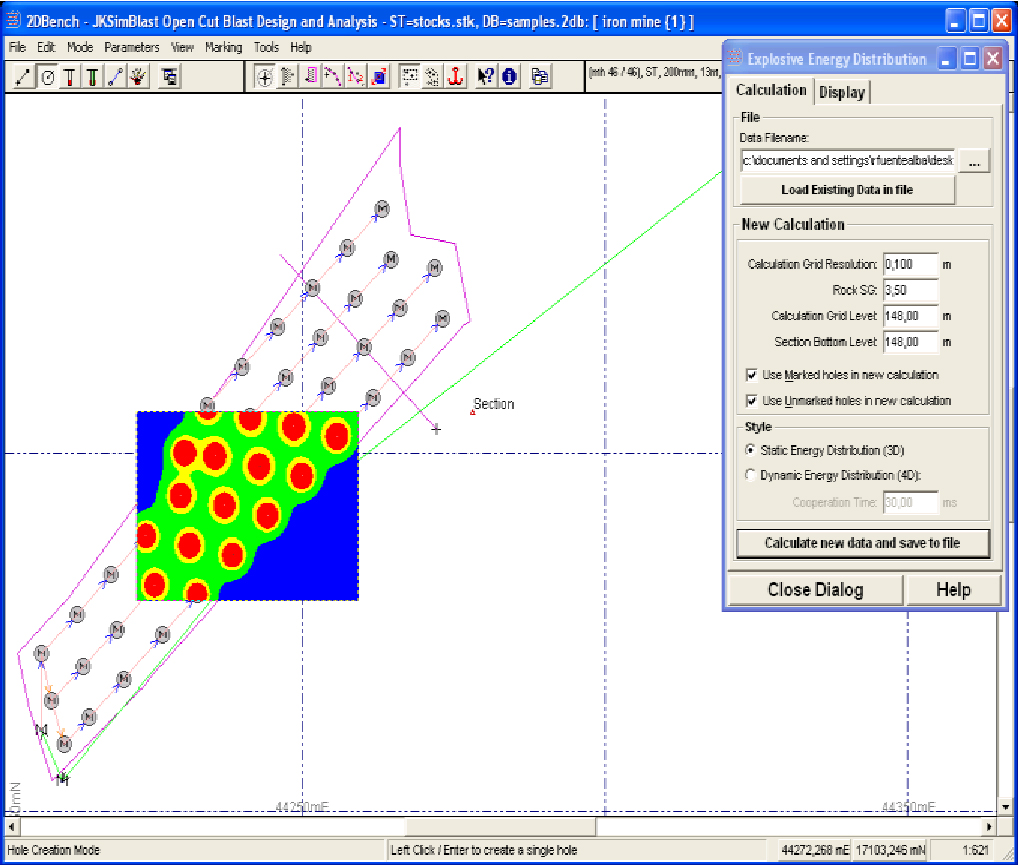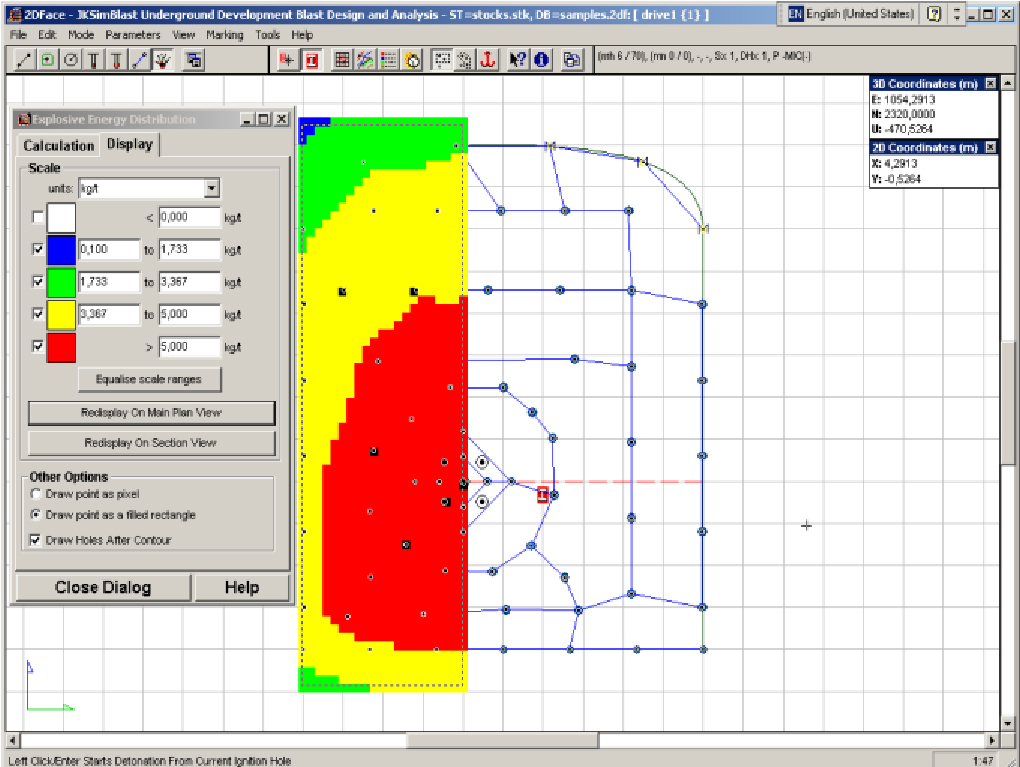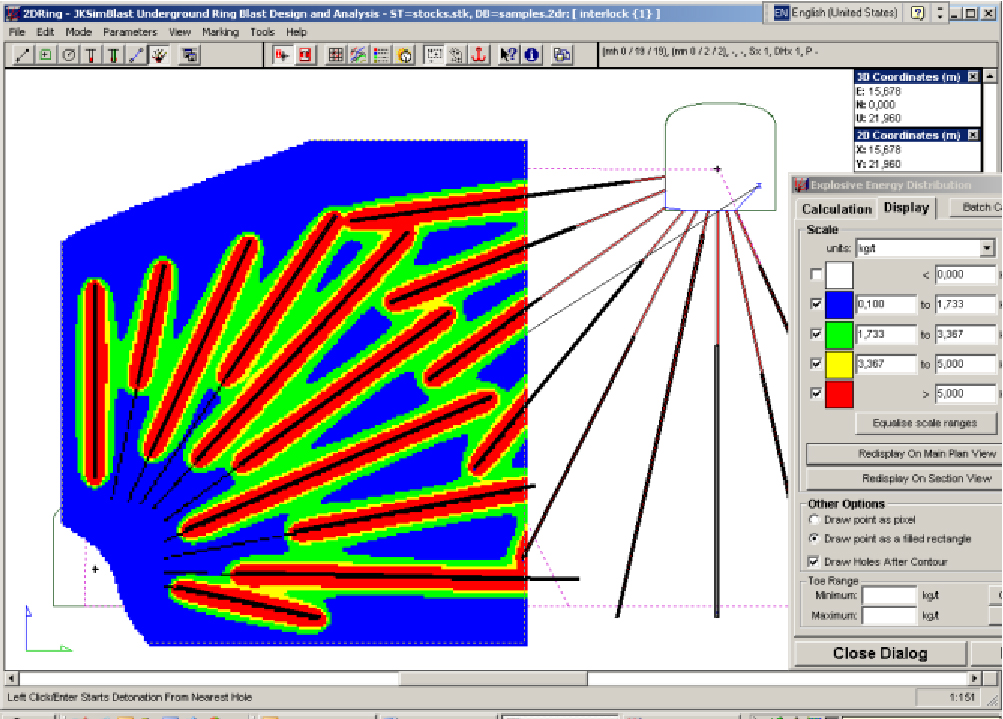JKSimBlast
WHAT IS JKSIMBLAST?
JKSimBlast is a software developed based on decades of experience by the Julius Kruttschnitt Australian Mining Research Centre (JKMRC) that enables blasting design, analysis, management and evaluation.
In the software you will be able to visualize how the firing sequence will be detonated in order to detect any anomaly in the design, either by type and/or quantity of inadequate explosives, incorrect delays, wrong well ties, poor spatial distribution of the blasting wells, etc.
JKSimBlast consists of a series of modules that work independently such as:

BMS (Blast Management System)
It is a blast management system that allows a structured control of the different elements involved in a mine, such as pits, geotechnical units, benches, blasting, vibrations, fractures, etc. It is also possible to visualize in three dimensions (3DView) through the BMS what was created in the design modules 2DBench, 2DRing or 2DFace.

2DBench
Allows the complete design of a blast with all its elements, i.e., establish a blasting area, configure a pattern, (burden, spacing, diameter of holes, length of holes, etc.), load holes with explosives, insert delays both in the hole and the surface, perform tiebacks, etc.

It also has various analysis tools such as blasting simulation, burden relief analysis, detonation isotime lines, Montecarlo Simulations (for delay dispersion), fragmentation estimation using the Kuz-Ram and JKMRC models, distribution explosive energy and vibration analysis (based on the model developed by Holmberg and Persson).
2DFace
Allows the complete design of blast holes in tunnels with options similar to those described in 2DBench.

2DRing
Allows the complete design of subway blasting (especially ring or fan designs) with options similar to those outlined in 2DBench.

TimeHex allows you to graphically visualize the amount of charges (or mass of these) detonating versus the time in which they detonate.
2DView allows you to view what was created in 2DBench in different orientations, it also creates variable contour graphs involved in blasting such as explosive energy, costs, controllable blasting variables, etc.
Stockview allows you to enter the databases of explosives and accessories from the main suppliers (DynoNobel, Orica, Enaex, etc.)
Design Importer allows you to import a blast mesh into 2DBench from a text file or Autocad R14, Datamine, Surpac, Vulcan and others.